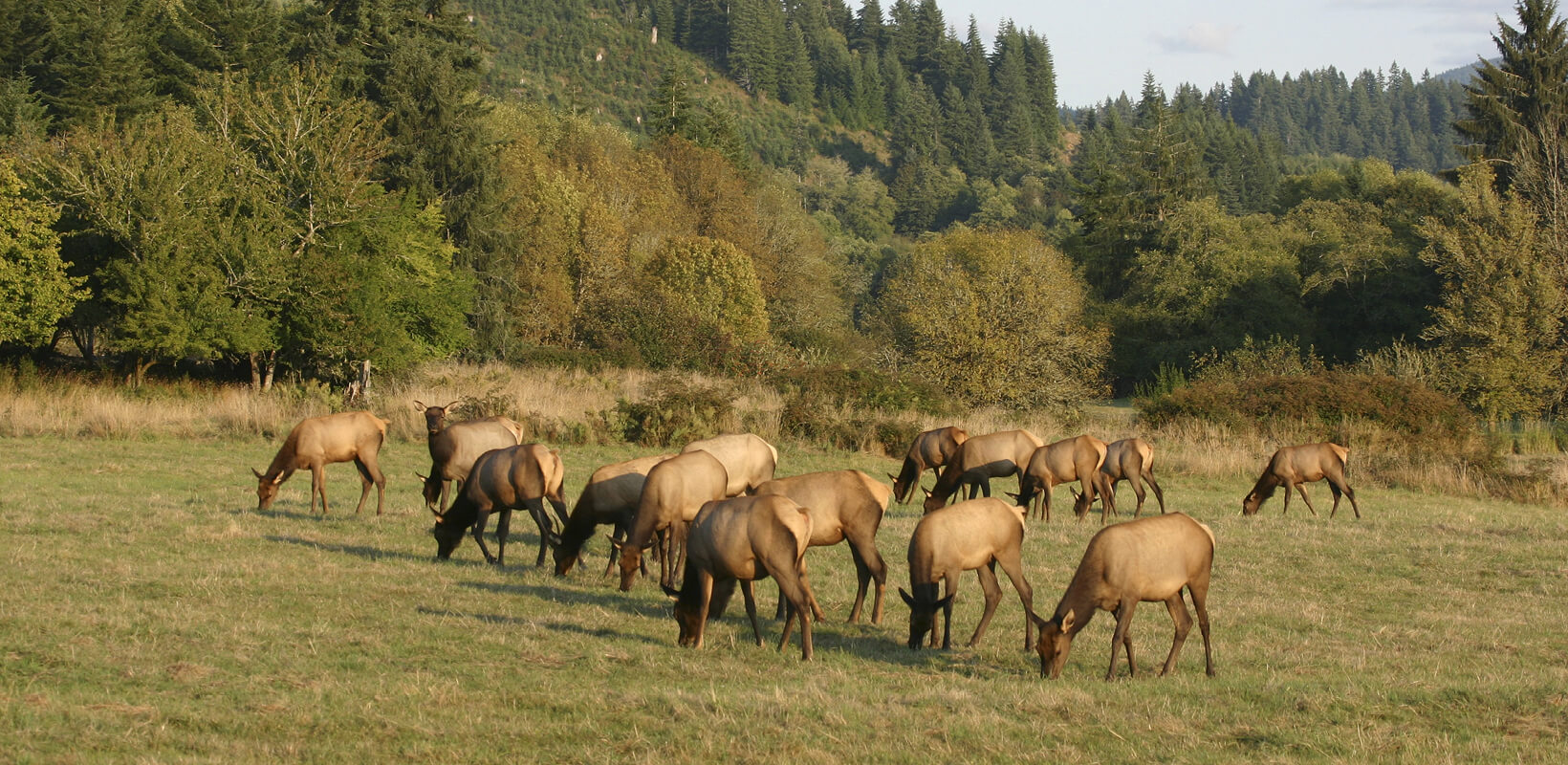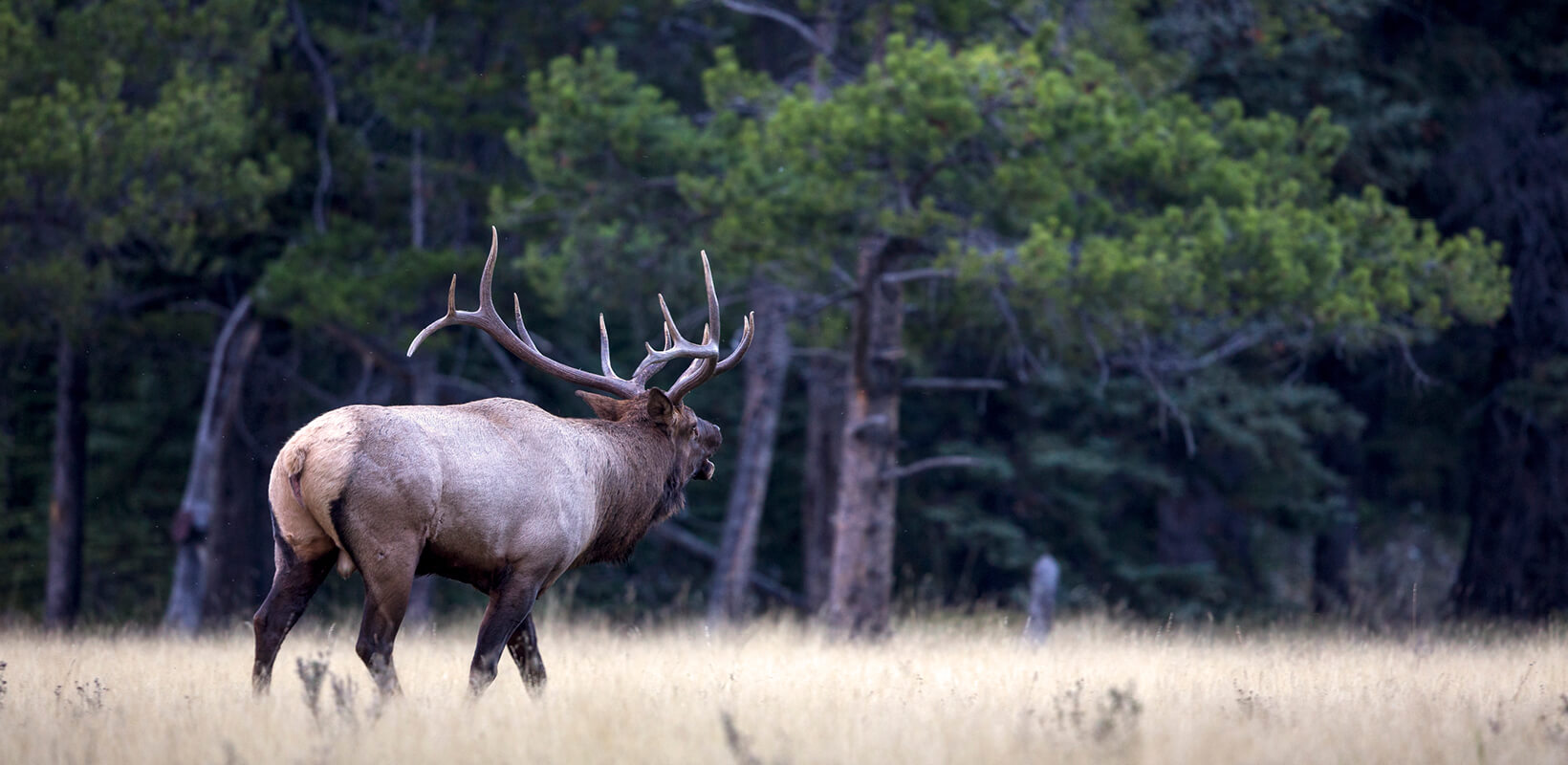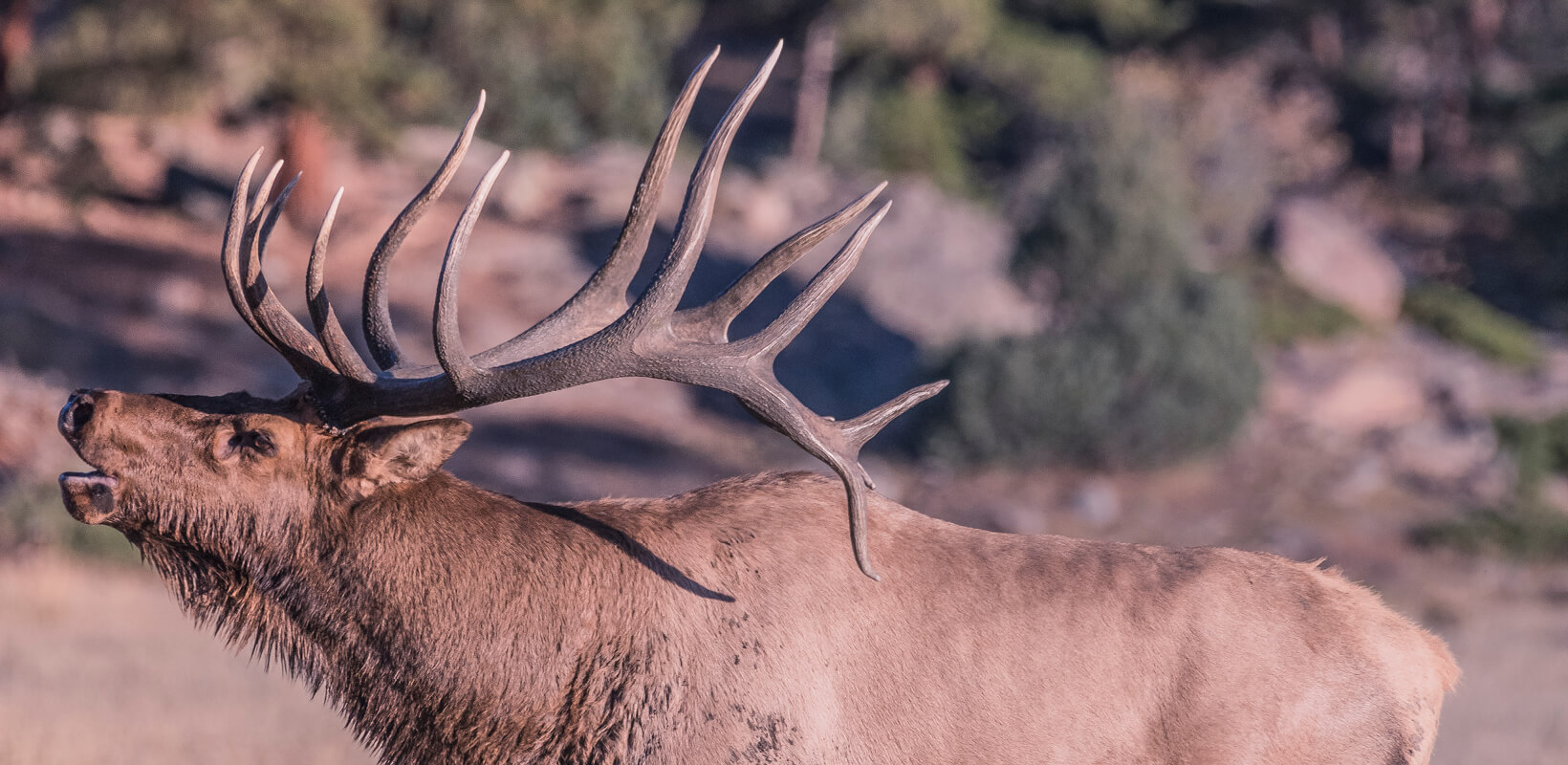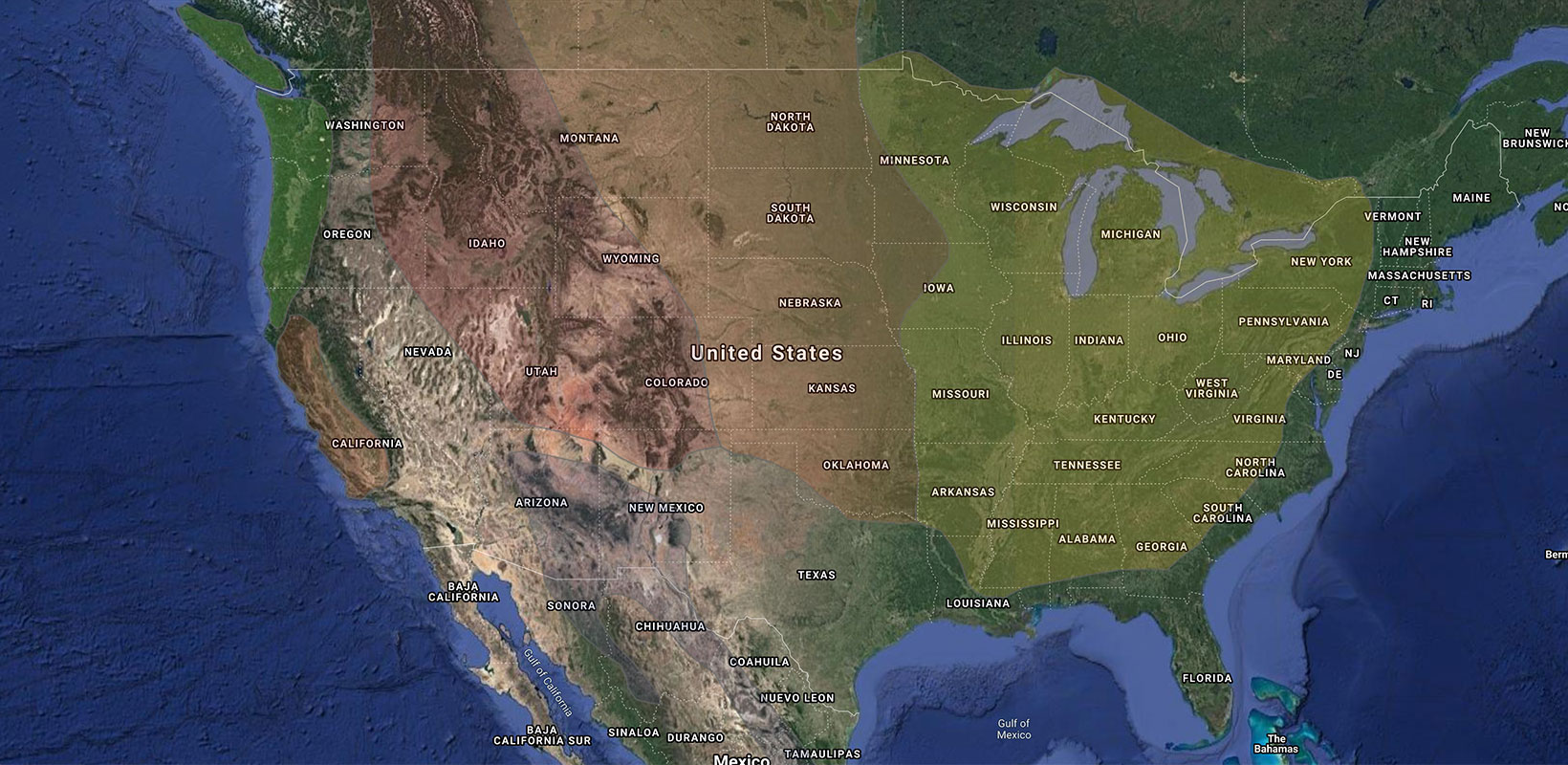Elk Basics
North American Elk, or Cervus canadensis, are split by some biologists into six subspecies:
- Rocky Mountain (Rocky Mountain West, now transplanted to other locations) – largest antlers of all subspecies
- Roosevelt’s (Coastal Pacific Northwest) – largest in body size of all subspecies, but not antler size
- Tule (Central California) – smallest body size of all subspecies
- Manitoban (northern Great Plains)
- Merriam’s (Southwest and Mexico) – Extinct
- Eastern (east of the Mississippi) – Extinct
Terminology

Bull: Male elk

Cow: Female elk

Calf: Baby elk

Spike: Yearling bull elk
Size and Weight
Newborn calf:
- 35 pounds (16 kg)
Cow:
- 500 pounds (225 kg) (Tule elk: 300 lbs., Roosevelt’s elk: 600 lbs.)
- 4 1/2 feet (1.3 m) at the shoulder
- 6 1/2 feet (2 m) from nose to tail
Bull:
- 700 pounds (315 kg) (Tule elk: 400 lbs., Roosevelt’s elk: 900 lbs.)
- 5 feet (1.5 m) at the shoulder
- 8 feet (2.4 m) from nose to tail

Color
- Summer: copper brown
- Fall, winter and spring: light tan
- Rump patch: light beige
- Legs and neck often darker than body
Birth Cycle
- Calves are typically born in late May through early June
- Calves are born spotted and scentless as camouflage from predators
- They spend their first few weeks hiding motionless while their mothers feed

Diet
- Summer: grasses and forbs
- Spring and Fall: grasses
- Winter: grasses, shrubs, tree bark and twigs
- Elk may supplement their diet at licks, where they take in minerals that may help them grow healthy coats and produce nutritious milk
- An elk’s stomach has four chambers: the first stores food, and the other three digest it
Ivories
- An elk’s top two canine teeth are called ivories
- Scientists believe ivories are remnants of saber-like tusks that ancestral species of elk used in combat
- Most hunters save ivories as a memento of the hunt

Antlers
- Only male elk have antlers
- Bulls shed and grow a new set of antlers every year
- New antlers are covered in fuzzy skin called velvet
- Antlers harden by late summer and the velvet peels away
- By September, antlers are solid bone
- A set of antlers on a mature bull can weigh up to 40 pounds
Social Organization
- Cows, calves and yearlings live in loose herds or groups
- Bulls live in bachelor groups or alone
- During the rut, cows and calves form harems with one or two mature bulls

Body Postures
- When alarmed, elk raise their heads high, open their eyes wide, move stiffly and rotate their ears to listen
- If a harem cow wanders, a bull stretches his neck out low, tips up his nose, tilts his antlers back and circles her
- Elk threaten each other by curling back their upper lip, grinding their teeth and hissing softly
- Agitated elk hold their heads high, lay their ears back and flare their nostrils, and sometimes even punch with their front hooves
Elk Talk: Vocalizations
- Elk are among the noisiest ungulates, communicating danger quickly and identifying each other by sound.
- High-pitched squeal: Newborn to its mother, who recognizes her calf by its voice.
- Bark: Warning of danger.
- Chirps, mews and miscellaneous squeals: General conversation among the group.
- Bugling (bellow escalating to squealing whistle ending with grunt): Bull advertising his fitness to cows, warning other bulls to stay away, or announcing his readiness to fight.
- Elk also use body language. For example, an elk displays dominance by raising its head high.
Audio Player
Bull elk bugle to attract cows and advertise their dominance to other bulls
Audio Player
Cows bark to warn others of danger
Audio Player
Cows mew to keep track of one another
The Rut
- Elk breed in the fall
- Bulls gather cows and calves into small groups called harems
- Bulls wallow in mud to coat themselves with urine “perfume” to attract cows
- They also bugle and rub trees, shrubs and the ground with their antlers to attract cows and intimidate other bulls
- Bulls aggressively guard their harems from other bulls
- Sometimes, bulls wage violent battles for a harem, occasionally even fighting to the death

Elk Range and Habitat
Range
- Prior to European settlement, more than 10 million elk roamed nearly all of the United States and parts of Canada
- Today, about one million elk live in the western United States, Wisconsin, Michigan, Minnesota, Missouri, Pennsylvania, Arkansas, Kentucky, Tennessee, Virginia, West Virginia and North Carolina, and from Ontario west in Canada
Habitat
- Food, water, shelter and space are essential to elk survival
- Elk live in a variety of habitats, from rainforests to alpine meadows and dry desert valleys to hardwood forests